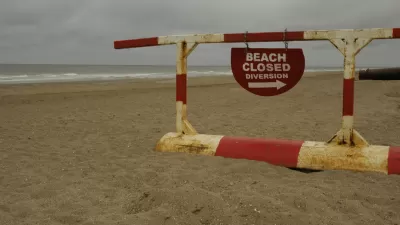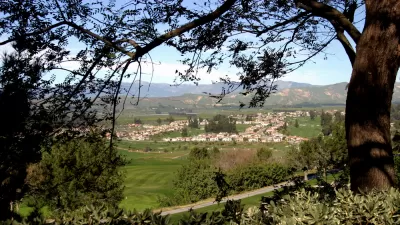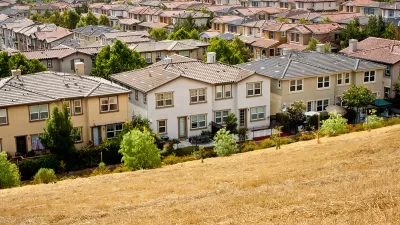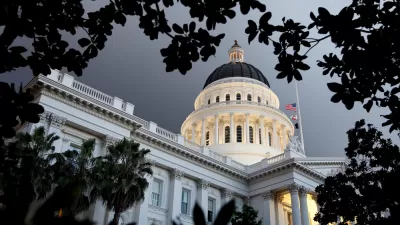California's average home prices are 2.5 times the national average and rising, so why is it so hard to build a political coalition to build more housing, and especially more affordable housing?

Liam Dillon performs a post-mortem on the weeping affordable housing proposal that died in the California State Legislature at the end of August.
"The idea behind Gov. Jerry Brown’s plan to stem the state’s housing affordability crisis was simple,: writes Dillon: "Make it easier to build houses."
The opportunity to review the politics behind the failure of the proposal also offers perspective on the complex world of development in the state. Dillon summarizes before going into a lot more detail:
Yet the proposal the governor unveiled in May represented a profound shakeup in how the development process would have worked in California. The measure challenged the primacy of local control over housing, inflamed powerful entrenched interests and was eyed warily by the very groups representing those the plan was supposed to help.
Those groups include tenants advocates and labor unions.

Planetizen Federal Action Tracker
A weekly monitor of how Trump’s orders and actions are impacting planners and planning in America.

Restaurant Patios Were a Pandemic Win — Why Were They so Hard to Keep?
Social distancing requirements and changes in travel patterns prompted cities to pilot new uses for street and sidewalk space. Then it got complicated.

Map: Where Senate Republicans Want to Sell Your Public Lands
For public land advocates, the Senate Republicans’ proposal to sell millions of acres of public land in the West is “the biggest fight of their careers.”

Maui's Vacation Rental Debate Turns Ugly
Verbal attacks, misinformation campaigns and fistfights plague a high-stakes debate to convert thousands of vacation rentals into long-term housing.

San Francisco Suspends Traffic Calming Amidst Record Deaths
Citing “a challenging fiscal landscape,” the city will cease the program on the heels of 42 traffic deaths, including 24 pedestrians.

California Homeless Arrests, Citations Spike After Ruling
An investigation reveals that anti-homeless actions increased up to 500% after Grants Pass v. Johnson — even in cities claiming no policy change.
Urban Design for Planners 1: Software Tools
This six-course series explores essential urban design concepts using open source software and equips planners with the tools they need to participate fully in the urban design process.
Planning for Universal Design
Learn the tools for implementing Universal Design in planning regulations.
Heyer Gruel & Associates PA
JM Goldson LLC
Custer County Colorado
City of Camden Redevelopment Agency
City of Astoria
Transportation Research & Education Center (TREC) at Portland State University
Camden Redevelopment Agency
City of Claremont
Municipality of Princeton (NJ)





























